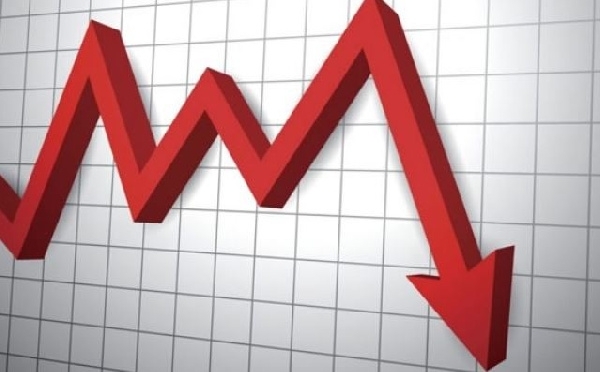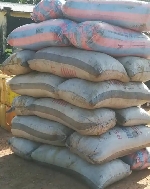Inflation to fall to 4.8% in Sub-Saharan Africa – World Bank
 The World Bank says declining inflation in the region can be attributed to the effects of monetary tightening and fiscal consolidation across countries
The World Bank says declining inflation in the region can be attributed to the effects of monetary tightening and fiscal consolidation across countries
The median rate of inflation in Sub-Saharan Africa is expected to be 4.8 per cent in 2024, down from 7.1 per cent in 2023, and it is predicted to decline further to 4.6 per cent in 2025 and 4.5 per cent in 2026.
According to the October 2024 World Bank Africa Pulse Report, declining inflation in the region can be attributed to the effects of monetary tightening and fiscal consolidation across countries as well as the steady decline in commodity prices from their highs in 2022.
The report notes that the path of convergence to inflation targets will continue across African countries although at different speeds, and it may hit some bumps along the road if upside risks to inflation materialise.
The slowdown in inflation rates, it observes, appears to be broad-based: about 70 per cent of the countries in the region are expected to have lower inflation in 2024 (compared to the previous year), and this proportion will increase to 80 per cent in 2025.
Yet, inflation rates are expected to be higher than they were in the pre-pandemic period for about 70 per cent of Sub-Saharan African countries.
Additionally, inflation among metal exporters is expected at 8 per cent in 2024 and 6.4 per cent in 2025, while that of oil exporters is set at 6.5 per cent in 2024 and 3.3 per cent in 2025.
High-frequency data suggest that central banks in Sub-Saharan Africa have made significant progress in the fight against inflation.
From its highest median rate of 9.9 per cent year-on-year in October 2022, inflation decelerated sharply to 4.6 per cent by June 2024.
However, the variability of inflation rates across countries remains high—with an interquartile range of about 12 percentage points this year, the report said.
This implies that some countries still face high inflation rates (double-digit rates) and the deceleration of inflation varies across countries in the region.
By June 2024, about 70 per cent of the countries in Sub-Saharan Africa (30 of 43) had inflation rates that were low and declining, while the inflation rate for 13 countries (30 per cent) was still high.
Nominal exchange rates appear to have stabilised by the end of June 2024, although at different levels across these two groups of countries.
Factors driving inflation include both external shocks (global supply chain disruptions) and internal shocks (such as macroeconomic imbalances, fragility, and debt hangover, among others).
These shocks not only create inflationary pressures but also jeopardise the stability of exchange rates.
At the same time, food inflation remains high and slightly volatile, while currencies have weakened sharply among countries with high inflation.
During this period, supply chain problems as a result of the war in Ukraine accelerated inflation from the second quarter of 2022.
Disruptions in the production of agricultural goods due to domestic conflicts and extreme weather events (droughts in Eastern Africa and the Sahel as well as floods in Southern Africa) also contributed to accelerating inflation in 2022, reaching peak levels in the first quarter of 2023.
The nominal exchange rates for the two groups of countries remained stable until February 2022 for the low-inflation countries and May 2022 for the high-inflation countries.
Currencies for the two groups weakened because of inflationary pressures arising from global geopolitical conflict.
The exchange rates of low-inflation countries depreciated until the fall of 2022 and then started gradually appreciating.
The currencies of high-inflation economies depreciated further.
After reaching their peaks in early 2023, food and headline inflation began cooling—although the pace of disinflation varied markedly across countries.
In low-inflation countries, inflation increased at a slower pace than in high-inflation countries throughout 2022, while headline and food inflation started to decline gradually and protractedly in January 2023.
This group— which accounts for 70 per cent of the countries in the region—is stabilising (headline and food) inflation at rates closer to their targets.
The disinflation among low-inflation countries has also been accompanied by a strengthening of their currencies.
For the group of high-inflation countries, headline and food inflation appear to have peaked and stabilized at higher levels.
Trending News

US announces 'another $1.7m' for Ghana via LEAP to aid recovery from recent drought
14:39
ICC's chief prosecutor arrives in Ghana
11:17
Police refutes 'mis/disinformation' about Oliver Baker-Vormawor's visit to Police Hospital, its expenses
01:56
MOWAG to renew strike over unresolved grievances
12:04
GAF and small-scale miners collabo not for the moment but for the future: Concerned Small-Scale Miners
12:49
Akufo-Addo, Bawumia and NPP can’t stop galamsey – Afaglo
15:05
A/R: 13 perish in accident near Obuasi
12:54
Day-2 of Operation Halt 2 storms Pra river galamsey site destroying 10 changfans, 10 water pumps
02:14
UE/R: Tensions rise as four security agencies clash over smuggled cocoa beans in Bawku
16:03
NDC Youth Organiser donates to support campaign efforts in Eastern region
12:45



